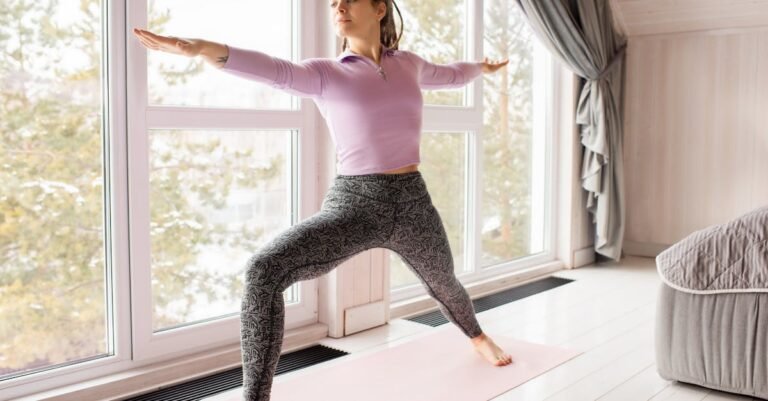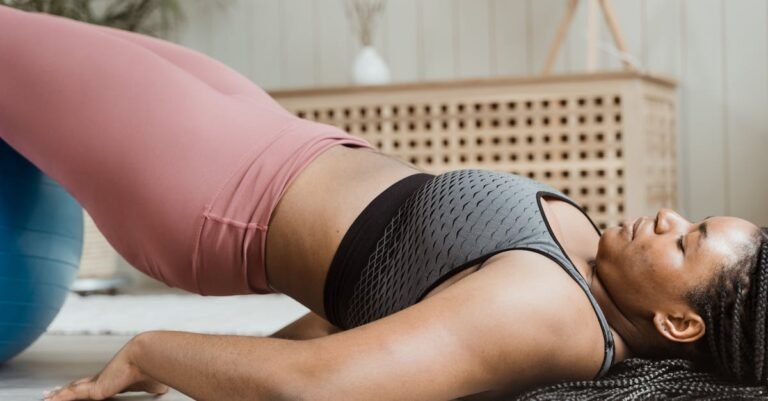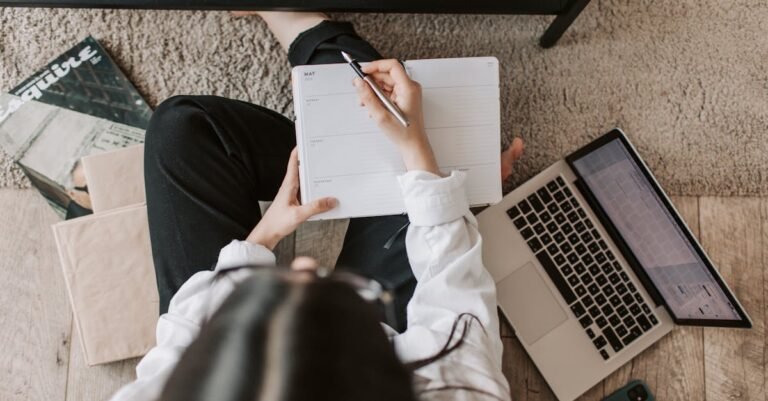Do you ever feel that little twinge in your lower back after sitting too long? Or maybe just wish you felt a bit stronger when carrying groceries or playing catch in the yard? A lot of us feel that way! It often comes down to your core – that middle section of your body. Having a strong core isn’t just about looking fit; it’s about feeling good and moving better every single day. Good news is, you don’t need a fancy gym membership or complicated machines to build one. This article will show you some of the best core exercises you can easily do right at home. You’ll learn simple, effective moves, understand why they work, and get the payoff: feeling stronger, standing taller, and maybe even saying goodbye to some of those everyday aches.
What Exactly *Is* Your Core (And Why Should You Care)?
Okay, so when people talk about the “core,” lots of folks immediately think of six-pack abs. Those are definitely part of it (they’re called the rectus abdominis), but your core is actually way more than just that front layer! Think of it like a strong, sturdy box that supports your whole body. It includes:
- Deep tummy muscles: Like the transverse abdominis, which acts like a built-in weightlifting belt, holding everything snug.
- Side muscles: Your obliques, which help you twist and bend sideways.
- Back muscles: Yep, your lower back is a huge part of your core!
- Even your glutes (butt muscles) and the tops of your thighs (hip flexors)!
Why does this matter? Imagine building a house on a shaky foundation – not a great idea, right? Your core is your body’s foundation. A strong core gives you stability for pretty much everything you do, from lifting a heavy box to just standing up straight. It helps prevent injuries, especially in your lower back (big win!). It can improve your posture so you’re not slouching. And even if you’re not a pro athlete, it makes everyday movements feel easier and more powerful.
Before You Start: Quick Tips for Success
Before you jump onto the floor, let’s chat about a few quick things to make sure you get the most out of these exercises safely.
First up: Breathing! It sounds simple, but breathing the right way helps engage those deep core muscles. Try to breathe into your belly, not just your chest. A good trick is to breathe out during the hardest part of the exercise. For example, when you lift into a crunch or tighten during a plank, breathe out.
Next, remember that doing it right is way better than doing it fast or doing a million reps. Focus on smooth, controlled movements. If you just flail around, you might not work the right muscles, and you could even hurt yourself. Slow and steady wins the core race!
Also, listen to your body. There’s a difference between feeling your muscles working hard (a good burn!) and feeling sharp pain. If something really hurts, stop or try an easier version. Don’t be a hero – it’s smarter to back off a bit than to get injured.
Finally, consistency is key. Doing 10-15 minutes of core work a few times a week is much more effective than trying to do an hour once every blue moon. Make it a habit!
The Foundation: Mastering the Plank
If there’s one core exercise almost everyone knows, it’s the plank. And for good reason! It’s awesome because it works so many core muscles all at once – the front, the sides, and even your back. Plus, it teaches your body how to stay stable and strong.
Here’s how to do a basic Forearm Plank:
- Get down on the floor on your elbows and knees.
- Place your elbows directly under your shoulders, forearms flat on the floor, parallel to each other (or you can clasp your hands).
- Lift your knees off the ground and straighten your legs, coming onto your toes.
- Your body should form a straight line from your head to your heels. Think: straight as a board!
- Important: Don’t let your hips sag down low or poke your butt up high in the air. Squeeze your glutes and imagine pulling your belly button gently towards your spine.
- Hold this position. Start with maybe 20-30 seconds and build up as you get stronger.
Common slip-ups? Letting the hips drop or rise, or letting your head hang down. Keep looking slightly forward or down at your hands. If a full plank is too tough right now, no worries! You can start with a Knee Plank (keeping your knees on the floor) or try holding for shorter periods. You can also try a Side Plank to really target those obliques – just prop yourself up on one forearm, stacking your feet.
Beyond the Plank: Moving Your Core
Planks are great for building stability, but your core also needs to control movement. These next couple of exercises challenge your core while parts of your body are moving – kinda like real life!
First, let’s try the Bird Dog. This one sounds a bit funny, but it’s fantastic for balance, coordination, and core control.
- Start on your hands and knees, like you’re about to crawl. Hands under shoulders, knees under hips. Keep your back flat.
- Engage your core – think about keeping your tummy tight so your back doesn’t arch or round.
- Slowly reach your right arm straight forward while at the same time extending your left leg straight back.
- Keep your hips and shoulders square to the floor. Imagine you have a glass of water balanced on your lower back – don’t spill it!
- Hold for a second, then slowly bring your arm and leg back in.
- Repeat on the other side (left arm forward, right leg back). That’s one rep. Aim for about 10 reps total (5 each side).
Another awesome one is the Dead Bug. Lie on your back for this one. It looks easy, but it really works those deep core muscles, especially that transverse abdominis we talked about.
- Lie flat on your back with your arms reaching straight up towards the ceiling and your knees bent at 90 degrees over your hips (like you’re sitting in an invisible chair).
- Crucial step: Gently press your lower back into the floor. Don’t let it arch up! Keep that connection throughout the exercise.
- Slowly lower your right arm straight back towards the floor behind your head, while at the same time straightening and lowering your left leg towards the floor.
- Go only as low as you can while keeping your lower back pressed down. Don’t let it pop up!
- Bring your arm and leg back to the starting position.
- Repeat with the opposite arm and leg (left arm, right leg). That’s one rep. Aim for 10-12 reps total.
Twisting and Turning: Working Your Obliques
Your core doesn’t just stabilize and move forward and back – it also helps you twist! Think about reaching across your body to grab something, swinging a bat (or a broom!), or just turning to look behind you. Those side muscles, your obliques, are key players here.
A classic move for the obliques is the Bicycle Crunch.
- Lie on your back with your hands lightly behind your head (don’t pull on your neck!).
- Lift your head and shoulders slightly off the floor. Bring your knees towards your chest.
- Now, bring your right elbow towards your left knee while straightening your right leg out (don’t let it touch the floor).
- Then switch sides: bring your left elbow towards your right knee while straightening your left leg out.
- Keep alternating in a controlled “pedaling” motion. Focus on the twist coming from your torso, trying to touch shoulder to knee, not just elbow. Keep it smooth, not super fast and jerky. Aim for 15-20 reps total.
Another good one is the Russian Twist (let’s start with a modified version).
- Sit on the floor with your knees bent and your feet flat on the ground.
- Lean back slightly until you feel your core engage. Keep your back straight – no hunching!
- Clasp your hands together in front of your chest.
- Slowly twist your torso from side to side, tapping your hands (or trying to) on the floor beside each hip.
- Keep your hips relatively still; the twist should come from your waist.
- If this feels easy, you can try lifting your feet off the floor (balancing on your sit bones) for more challenge. Aim for 10-15 twists to each side.
Putting It All Together: A Simple Home Routine
Okay, you’ve learned some awesome core exercises! Now, how do you fit them into your life? You don’t need to do all of them every day. The best approach is to pick a few and do them consistently.
Here’s a super simple routine you could try 3-4 times a week:
- Forearm Plank: Hold for 30-60 seconds (or whatever feels challenging but doable).
- Bird Dog: 10 reps total (5 each side), focusing on slow control.
- Dead Bug: 10-12 reps total (5-6 each side), keeping that lower back down.
- Bicycle Crunches: 15-20 reps total, nice and smooth.
Do one set of each. If you have more time and energy, you could rest for a minute and repeat the whole circuit 1-2 more times.
The beauty of these exercises is their flexibility. Only got 5 minutes during TV commercials? Just do a plank and some bird dogs. Waiting for the kettle to boil? Squeeze in some dead bugs. Let’s imagine someone like Mark, who works at a desk all day and used to complain about his back feeling stiff. He started doing just 10 minutes of these core moves before his morning shower. (This is just an example, of course!) After a month, he noticed he could sit longer without discomfort and even felt stronger carrying his kiddo around. It’s about finding what works for *you* and sticking with it.
So, there you have it! Building a stronger core doesn’t require a gym or fancy equipment. Simple, effective exercises like planks, bird dogs, dead bugs, and twists can make a huge difference, and you can do them right in your living room. Remember, the goal isn’t just about getting visible abs; it’s about building that solid foundation for your body. This helps you move better, stand taller, and hopefully keep those annoying aches and pains away. The most important things are to focus on doing the exercises correctly (form over speed!) and to be consistent. Even 10-15 minutes, a few times a week, adds up. Start small, listen to your body, and enjoy the feeling of getting stronger from the inside out. You’ve totally got this!










